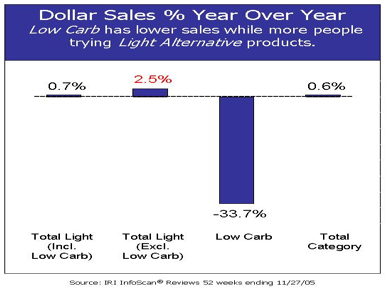- Details
- Category: Financial Financial
- Hits: 7127 7127
 Businesses are reporting more Americans are sampling healthy eating options. A new study reports that almost two-thirds of U.S. adults consider themselves healthy eaters. One indication of changing grocery cart contents was reported in the annual survey of American Eating Trends. The number of Americans reporting they are buying more fruit increased last year, reversing a 14-year decline. If America is eating healthier, why is it getting fatter? Many dieticians and nutritionists are pointing to portion size as a key reason more people are becoming super-sized.
Businesses are reporting more Americans are sampling healthy eating options. A new study reports that almost two-thirds of U.S. adults consider themselves healthy eaters. One indication of changing grocery cart contents was reported in the annual survey of American Eating Trends. The number of Americans reporting they are buying more fruit increased last year, reversing a 14-year decline. If America is eating healthier, why is it getting fatter? Many dieticians and nutritionists are pointing to portion size as a key reason more people are becoming super-sized.
Smaller Plate for a Smaller Waist
The size of food packaging and portions has steadily increased over the past 30 years. Diet researchers continue to come up with findings that suggest if you super-size your plates, bowls, and serving spoons, you will super-size yourself. When all you can eat buffets and bottomless bowls are the new norm for meal portions, we eat more. Think of it as portion peer pressure. Conversely, if you use smaller plates and bowls, you will eat less food. Consuming smaller, healthy portions translates to a smaller number of daily calories.
A study by Cornell University researchers found that teenagers poured 66 percent less juice into tall narrow glasses than they did into short wide glasses. People attending an ice cream social found that those receiving larger bowls served themselves 30 percent more ice cream than those with smaller bowls; even though they were not aware of this. We count calories with our eyes and not from serving size. A study of people assigned to sit at a table equipped with auto-refilling soup bowls consumed 73 percent more soup than those with regular bowls. The I'm full bells did not ring and they did not perceive themselves as eating more.
Grocery Stores Healthy Eating Trends
Grocers and consumer package goods companies are taking advantage of a rising interest in organic products, fruit, and light product alternatives. All have shown strong initial sales and are taking the space on grocery shelves previously reserved for low-carb.
In 2005, light weight management products significantly outpaced total category sales growth across the snack, dessert, beverage and dairy product segments. Many consumers have embraced the concept of healthful new products, but overall dietary changes have been slow and gradual. New products enabling consumers to make easy improvements in their diets, such as Nabisco 100 Calorie Packs and Sara Lee Heart Healthy Bread, have met with strong success. However, over half of consumers continue to take a haphazard approach to healthy eating, and the majority of consumers continue to eat both healthful and indulgent foods in their diets.

Meet the Calories
Whether the customer is choosing a light-alternative version of a favorite cookie, something low-fat or low-carb, one reality remains unchanged - calories do count. It's time to become reacquainted with the old-fashion calorie.
A calorie is a unit of energy contained in food that provides fuel for muscles, like gasoline provides fuel for your car. Staying with a car analogy, think of muscle as the engine in your body. Fat can then be compared to high test fuel because it provides nearly twice the amount of calories or energy as a gram of simple sugar. You can go twice as many miles on a gram of fat as you can on a gram of carbohydrate.
Don't overload on fats. Aim to have no more than 30 percent of your calories come from fat, with 10 percent or less from saturated and trans fat. American Dietetic Association; recommends limiting butter, vegetable shortening and lard in cooking and replacing them with olive and canola oils. The bottom line to losing fat weight is to burn more calories than you consume. If you eat 2,000 calories a day and only burn 1,500, you're going to gain weight. On the other hand, if you consume 1,500 calories and burn 2,000, you'll be in caloric deficit by 500 calories. Since it takes 3,500 excess calories to gain a pound, you'd lose one pound per week if you produced a 500-calorie deficit each day of the week.
Calorie Deficit Example
You could reduce your calorie intake by 250 per day and increase your physical activity by 250 calories per day (for a 150-pound person, a 2.5-mile walk is all it would take). Do that each and every day of the week and you'll drop a pound per week.
